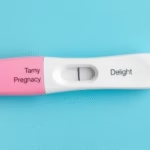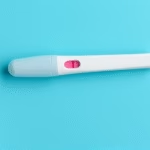Understanding Blood Clots in Implantation Bleeding
In this article, we will be talking about can you have blood clots in implantation bleeding. Implantation bleeding occurs when a fertilized egg attaches itself to the lining of the uterus. This can happen roughly 6 to 12 days after conception. While this bleeding is often light and short-lived, questions often arise regarding its characteristics, including whether blood clots can occur during this phase. It is crucial to distinguish implantation bleeding from other types of bleeding, especially menstrual bleeding, which may present with clots. Understanding this concept is essential for those who may be navigating early pregnancy signs.
Implantation bleeding usually appears as light spotting and can vary from woman to woman. For some, it may resemble a light period, while for others, it is barely noticeable. Importantly, blood clots can be a concern for pregnant women, as they can indicate other health issues. During early pregnancy, the body is undergoing significant changes, and any unusual symptom warrants professional consultation.
What is Implantation Bleeding?
Implantation bleeding is one of the early signs of pregnancy, marking the moment when the fertilized egg buries into the uterine lining. Unlike a menstrual period, which typically lasts a few days and presents with a heavier flow, implantation bleeding is typically much lighter and often only lasts a few hours to a couple of days. Its color can range from light pink to brownish, differing significantly from the bright red color typically associated with menstruation.
As the fertilized egg embeds itself into the uterine lining, it can cause minor disruptions that result in small amounts of blood being released. This process can be so subtle that many women may not even notice it. The bleeding is usually brief, lasting no longer than a few days, making it easier to overlook.
Understanding how implantation bleeding works and its characteristics can help differentiate it from other forms of vaginal bleeding. If there are any uncertainties about the nature of the bleeding or accompanying symptoms such as clots or excessive pain, it is advisable to consult with a healthcare provider.
Characteristics of Implantation Bleeding
Identifying the characteristics of implantation bleeding is vital for understanding early pregnancy signs. These characteristics can help individuals determine whether they are experiencing implantation bleeding or something more concerning.
Some key characteristics include:
- Timing: Implantation bleeding occurs around a week to two weeks after conception.
- Color: It typically ranges from light pink to brownish-red.
- Flow: Usually much lighter than a regular menstrual period.
- Duration: Usually lasts from a few hours to a couple of days.
- Associated Symptoms: It is generally not accompanied by severe cramping or significant discomfort.
Recognizing these characteristics can help in identifying whether one is experiencing implantation bleeding or another type of bleeding like menstrual bleeding or bleeding due to complications.
Blood Clots and Early Pregnancy
Blood clots during early pregnancy can raise concerns for many. While experiencing slight spotting or bleeding is common, the presence of blood clots during this period requires careful evaluation. Blood clots can sometimes indicate non-viable pregnancies, such as a miscarriage or ectopic pregnancy.
Several factors can contribute to blood clots during early pregnancy:
- Hormonal changes: Fluctuations in hormone levels can affect blood flow.
- Medical history: Women with a history of clotting disorders may be at higher risk.
- Uterine conditions: Abnormalities in the uterus can lead to bleeding with clots.
If blood clots accompany bleeding during early pregnancy, it is essential to seek medical advice promptly.
Differentiate Between Implantation Bleeding and Menstrual Bleeding
Being able to differentiate between implantation bleeding and menstrual bleeding is crucial for early pregnancy detection. The following aspects can help distinguish between the two:
- Timing: Implantation bleeding occurs about a week or so before the expected menstrual period.
- Color: While menstrual blood is usually bright red, implantation bleeding is often light pink or brown.
- Flow: A very light flow characterizes implantation bleeding, avoiding the heavier flow seen during menstruation.
- Duration: Implantation bleeding typically resolves within a few hours to a couple of days, unlike menstrual bleeding, which lasts longer.
Understanding these differences allows women to better interpret their symptoms and seek timely medical advice if necessary.
When to Seek Medical Attention
Consulting a medical professional is recommended if any of the following occur:
- Heavy bleeding: Soaking through one or more sanitary pads in an hour.
- Presence of clots: Especially those larger than a quarter.
- Accompanied symptoms: Severe pain, dizziness, or fever.
If bleeding is accompanied by clots or other unusual symptoms, it is critical to seek medical evaluation to ensure proper diagnosis and treatment.
Potential Complications Associated with Clots
While small clots may sometimes be benign, larger clots or clots accompanied by heavy bleeding can indicate potential complications, which include:
- Miscarriage: The most common cause of heavy bleeding and clots during early pregnancy.
- Ectopic pregnancy: A pregnancy that occurs outside the uterus, causing potential risks to the mother.
- Hormonal imbalance: Can lead to abnormal bleeding patterns.
Being aware of these complications can help in identifying when to seek medical attention and understanding what conditions may present similar symptoms to implantation bleeding.
Seeking Clarity on Clots During Implantation Bleeding
Women experiencing bleeding during the implantation process may question the presence of blood clots and what they could mean. If there is any concern about bleeding or clots, it is critical to consult a healthcare provider who can provide an accurate diagnosis and recommend appropriate care. Be proactive about your health and do not hesitate to reach out for any guidance or reassurance.
Final Thoughts
Understanding whether you can have blood clots in implantation bleeding requires clarity about the signs and characteristics of early pregnancy. Implantation bleeding is often a light spotting experience, typically occurring between 6 to 12 days after conception. While it can be a hopeful sign of pregnancy, it is essential to monitor for any symptoms of concern, including blood clots.
The most significant takeaway is awareness of your body and its signals during this crucial period. If you experience blood clots alongside any form of bleeding, consulting a healthcare professional is crucial. Regular monitoring and understanding your menstrual cycle can further aid in recognizing any irregularities.
Ultimately, being well-informed about your reproductive health will empower you to make informed decisions and seek timely medical attention when needed. Let this knowledge serve not only as information but as a guide for navigating through early signs of pregnancy.
Frequently Asked Questions
- Can implantation bleeding be heavy like a period?
No, implantation bleeding is usually much lighter than a regular period and lasts for a shorter duration.
- What color is implantation bleeding?
It can range from light pink to brownish, differentiating it from regular menstrual blood.
- When should I consult a doctor during implantation bleeding?
If you experience heavy bleeding, clots, or severe pain, you should seek medical attention.
- Is implantation bleeding a guaranteed sign of pregnancy?
While it can indicate pregnancy, not all women experience it, and its absence does not mean pregnancy is not occurring.
- What should I do if I see blood clots?
Consult a healthcare provider for an assessment, especially if accompanied by heavy bleeding or pain.
Further Reading
What Type of Psychotherapy Is Best for Anxiety?







